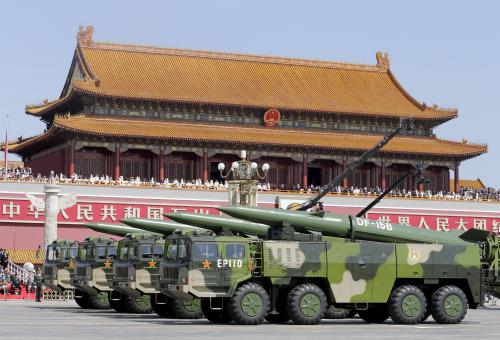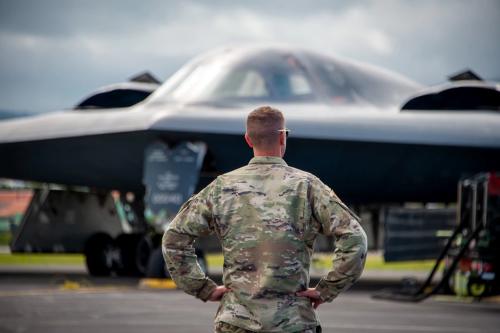President Bush announced a widely praised decision in November to unilaterally slash the size of the U.S. strategic nuclear arsenal.
His proposal, which would cut the number of U.S. warheads from 7,000 weapons today to between 1,700 and 2,200 warheads a decade from now, was intended to fulfill his campaign promise to “leave the Cold War behind.”
Two months later, the bloom is coming off the Bush plan.
Just last week, the Pentagon made public the main conclusions of the yearlong classified review it undertook to fill in the details of Mr. Bush’s vision. According to this Nuclear Posture Review, the administration wants to save rather than scrap many, if not most, of the 5,000 weapons scheduled for retirement.
Even when Mr. Bush first announced his plan, there were signs that the 1,700-2,200 figures were misleading.
To generate these numbers, Mr. Bush abandoned the longstanding rules used to count warheads. Weapons on systems being inspected or refurbished—and thus not capable of actually being delivered—no longer show up in the overall tally. Because at any given moment roughly 400 warheads are on systems that are off-line, Mr. Bush’s target is actually slightly higher than the 2,000-2,500 level that President Bill Clinton proposed going to five years ago.
The Nuclear Posture Review also makes clear that the administration is slowing down previous plans to retire weapons.
The 1993 START II agreement, which the elder George Bush negotiated but which never went into effect, called for the United States and Russia to cut their arsenals to between 3,000 and 3,500 weapons apiece by 2007. The Pentagon now expects to have 3,800 operational weapons—or about 4,200 weapons, using traditional counting rules—in 2007. So five years from now, the younger Mr. Bush plans to have the United States deploy between 700 and 1,200 more warheads than his father did.
Most important, the Nuclear Posture Review confirms that most—the exact number is still undecided—of the retired warheads will not be destroyed. Rather, many will be placed in a “responsive force” that will enable the United States to return them to operation in weeks or months, if needed. Others will be placed in the inactive stockpile. So cutting weapons doesn’t mean eliminating them.
Administration officials defend the decision to save warheads rather than scrap them on the grounds that no arms control treaty actually required the United States to destroy individual warheads. This is an odd defense given the administration’s disdain for arms control and its belief that the U.S.-Russian relationship has changed fundamentally.
More broadly, the administration justifies the responsive force on the grounds that the world is a dangerous and dynamic place and new threats could arise at any moment. The only sensible way to respond to such danger and uncertainty is to maximize America’s flexibility.
The problem with this flexibility is that it can help create the very circumstances it is designed to protect against. If Washington reserves the right to rearm, so will Russia.
Perhaps the administration is right that our new friendship with Moscow is permanent—though it is unclear how we can be certain of this if the world is in fact unpredictable. But are we really safer with thousands of Russian warheads sitting in storage facilities vulnerable to theft?
Further complicating matters is the administration’s commitment to defending America against missile attack. Combining missile defenses with a large, active and responsive nuclear force could be provocative. Russia, and even more so, China, might conclude that Washington is seeking a first-strike capability that it can use to coerce them. This might prompt Moscow to keep more of its own weapons deployed. Beijing is likely to respond by expanding its own missile forces.
It is not too late for Mr. Bush to fashion a nuclear weapons policy that truly leaves the Cold War behind. As he has said repeatedly, Washington and Moscow are friends, not enemies. No one worries about the British and French strategic arsenals, and China possesses only two dozen long-range missiles.
So Mr. Bush should think in bolder terms. He should work with Moscow to reduce each side’s offensive forces to 1,000 weapons or less—and scrap the rest. The prospect of tens, let alone hundreds, of weapons exploding on one’s territory is sufficient to deter anyone. And he should accept Russia’s offer to conclude a legally binding treaty to make these truly radical cuts irreversible.
The Cold War ended more than a decade ago. The time has come for making sure our nuclear force posture reflects that reality.



Commentary
Op-edPlaying Numbers Game with Nuclear Force Cuts
January 17, 2002